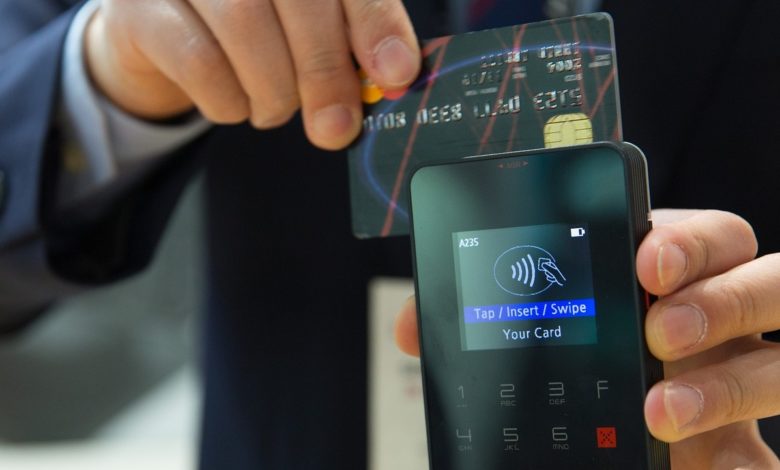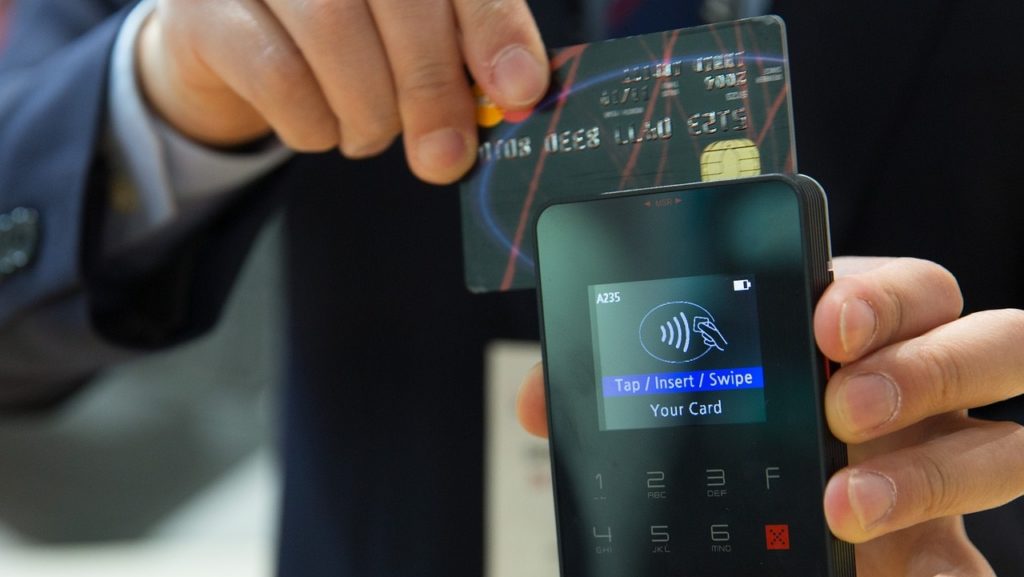Americans Still Hanging on By Running Up Their Credit Cards

In July, the mainstream financial media breathlessly reported that consumer spending was “holding up” based on better-than-expected retail sales. But how did consumers manage to spend all of that money?
They borrowed it.
After a pause in June, American consumers went back to charging up their credit cards in July.
Meanwhile, borrowing for big-ticket items fell into the basement in July. This is a recession warning sign.
Americans added another $10.4 billion in consumer debt in July, according to the latest data from the Federal Reserve. They now owe a record $4.98 trillion in consumer debt.
On an annual basis, consumer debt rose by 2.5% in July.
The Federal Reserve consumer debt figures include credit card debt, student loans, and auto loans, but do not factor in mortgage debt. When you include mortgages, US households are buried under a record level of debt. Household debt cracked $17 trillion for the first time ever in the first quarter of this year.
In June, Americans paused credit card purchases with revolving debt contracting slightly. But that appears to have been an anomaly. Revolving debt, primarily made up of credit card balances, jumped by $9.6 billion. That was a 9.2% annual increase. Americans now owe $1.27 trillion in revolving credit.
The bigger problem is the double whammy of rising debt and rising interest rates. Average credit card interest rates eclipsed the previous record high of 17.87% months ago. The average annual percentage rate (APR) currently stands at 20.68%.
As a result, more and more Americans are struggling to pay their credit card balances.
Consumers typically pay down credit card debt during the first quarter of the year. In Q1 2023, credit card debt remained basically unchanged. The annual payoff never happened.
According to a JD Power survey, 51% of US credit cardholders now carry revolving debt, and the number of accounts past due by one cycle has increased by 42.6% over the last two years. Delinquencies have crept up to the highest level since 2017.
While Americans are continuing to spend money on everyday purchases using credit cards, borrowing for big-ticket items such as automobiles has tanked in recent months. Non-revolving credit, including student loans, auto loans and borrowing for other big-ticket items, rose by just $773 million in July, a paltry 0.2% annual increase.
On average, non-revolving debt has increased by 5% on an annual basis.
The plunge in non-revolving credit indicates that consumers have cut back spending on big-ticket items. That could signal that the economy is slipping toward a recession.
Nevertheless, spiking interest rates are not slowing down credit card borrowing. That’s likely because people simply don’t have a choice.
Federal Reserve rate hikes theoretically slow down borrowing and cool demand. But while people can cut discretionary spending, the average person can’t just stop buying groceries or filling up their gas tanks. If prices are rising faster than incomes, people have to turn to credit cards, no matter how high the interest rates climb.
As JD Power analysts made this very point.
The pandemic-era savings cushions are gone, the economy is shaky and consumers are leaning more heavily than ever on their credit cards to cover day-to-day expenses. Consumers are using their cards for a lot of everyday purchases. Grocery shopping is the lead purchase type that consumers say they are making.”
Americans have also blown through their savings to make ends meet. Aggregate savings peaked at $2.1 trillion in August 2021. As of June, the San Francisco Fed estimated that aggregate savings had dropped to $190 billion.
In other words, Americans have blown through $1.9 trillion in savings in just two years.
Even the mainstream is starting to recognize this isn’t a sustainable trajectory. Bloomberg reported, “Despite persistent inflation and high interest rates, consumer spending has remained resilient and helped power the economy. Some have resorted to credit cards and savings to do so, but with savings shrinking and delinquencies on the rise, some economists doubt the current spending momentum is sustainable.”
Student loan repayment is scheduled to restart in October. That is going to put even more strain on debt-saddled consumers.
As Peter Schiff recently pointed out in a tweet, the fact that Americans continued to run up credit card debt despite high interest rates shows the Fed is not winning the inflation fight.
Surging credit card debt and plunging savings prove the #Fed lost the #inflation fight. To win, the Fed must reduce consumer spending and increase savings. The rate hikes only helped lower the #CPI because they strengthened the dollar. A weakening dollar will reverse those gains.
— Peter Schiff (@PeterSchiff) August 14, 2023
The bottom line is that Americans turned to credit cards because they didn’t have any other way to make ends meet. People don’t run up their Visa balance month after month to buy groceries when they are in “very strong” financial shape. The stimulus checks are long gone. Savings are being depleted. The average person had no choice but to pull out the plastic if they wanted to maintain their standard of living. Of course, this never was a sustainable trajectory. A credit card has this inconvenient thing called a limit.
Call 1-888-GOLD-160 and speak with a Precious Metals Specialist today!
Buka akaun dagangan patuh syariah anda di Weltrade.
Source link







